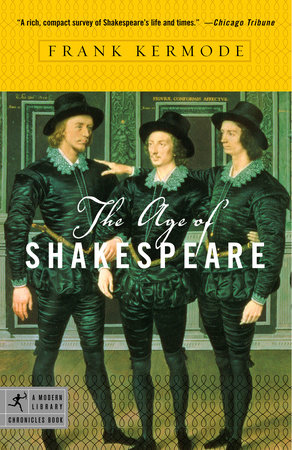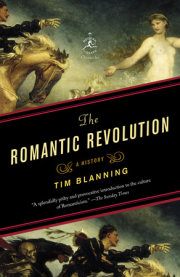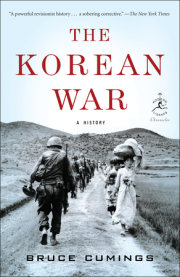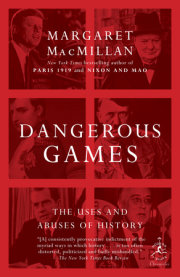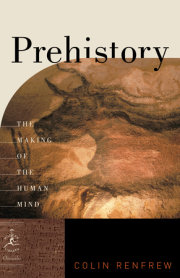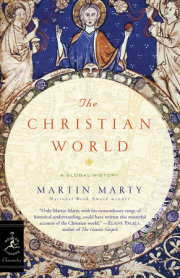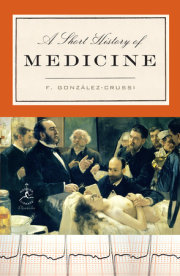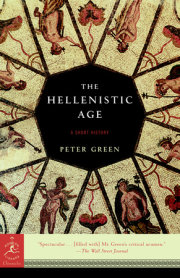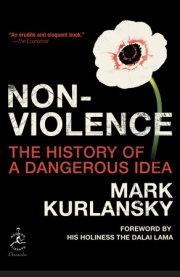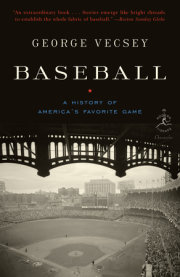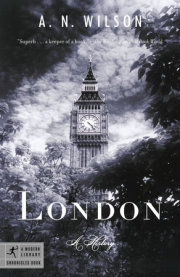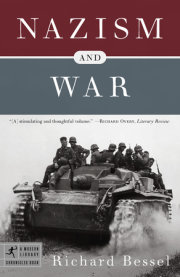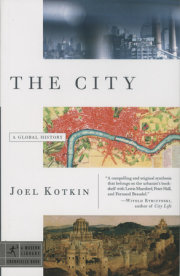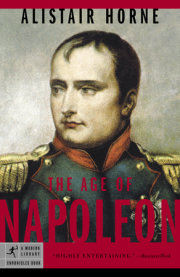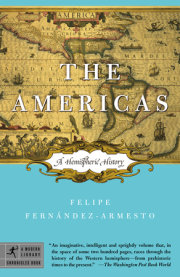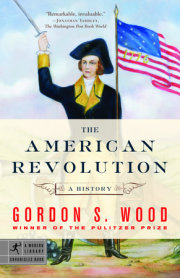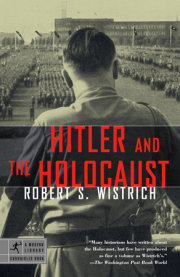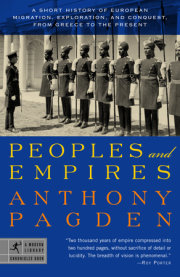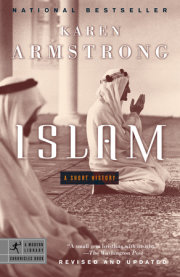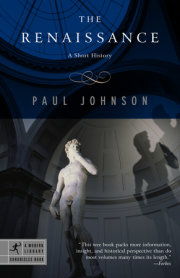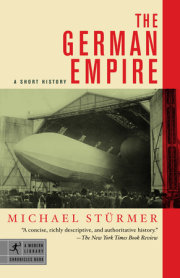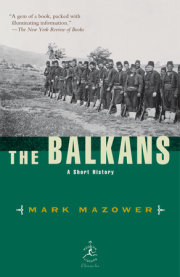Chapter 1The first task of one who sets out to write briefly on Shakespeare and his age must be to move the focus back from the life of the playhouse and say something about the greater world of national politics. One dominant concern in that world throughout the Tudor period was the precariousness of the royal succession. If this now seems a relatively remote and unimportant matter, it is worth recalling that Shakespeare's history plays, a good quarter of his entire output, dealt with anxieties, indeed with civil wars, about succession, and even portrayed the events leading up to the dubiously valid accession of Henry VII, Queen Elizabeth's grandfather. The succession was a matter of concern to everybody, not only because the monarchy then had more personal power than it has been able to keep, but because in Tudor times the whole issue was bound up inseparably with religious differences, and religion could mean war. The expansion of the empire under the Protestant Elizabeth inevitably caused conflict with Catholic Spain and allowed her the triumph over the Spanish Armada; but there were still English Catholics who had been instructed by the Pope that Elizabeth was an illegitimate usurper and that one could be forgiven for eliminating her. The plots against Elizabeth of her cousin Mary, Queen of Scots, and Mary's Catholic followers were a serious recurrent anxiety.
By the date of Shakespeare's birth (1564) Elizabeth had been on the throne for almost six years, and the "Elizabethan Settlement" had established the Church of England as Protestant. Though "Anglo-Catholic" (to apply a later description), the English church was now entirely severed from Rome. The events that brought about great changes in English social and economic life had occurred in the reigns of Elizabeth's father, Henry VIII, and of his son Edward VI. It is traditional to say that the "English Reformation" took place from 1529 to 1559-the latter is the date of the Elizabethan Acts of Uniformity and Supremacy, and the former the date when Henry, failing to obtain the Pope's consent to his divorce from his first wife, Catherine of Aragon, made himself supreme head of the Church in the Pope's place. This neat formulation overlooks the history of dissent from Wyclif and the Lollards in the late fourteenth century, a reform movement not forgotten in the years before Henry's catastrophic break with Rome. But that break, and the proclamation of the English as the true Catholic yet vernacular church, was, despite opposition, decisive in the long run.
Henry very much wanted a male heir, but the surviving child of his first, supposedly invalid, marriage was a daughter, Mary. His second wife, Anne Boleyn, produced another daughter, Elizabeth, and it was Jane Seymour, the third of his wives, who gave birth to a son, Edward. He succeeded his father in 1547, and his brief rule was dominated by a harsh Protestant regency. His successor, his elder half-sister Mary, was, like her mother, a devout Catholic and did all she could to restore relations with the Papacy. Her too-late marriage to Philip of Spain was barren. At the end of her short reign she was succeeded by Elizabeth, who resumed her father's title as supreme head of the Church, and was able to withstand both the Catholic and the growing Puritan oppositions.
The Reformation affected not only theology and liturgy; the distribution of national wealth and political power was greatly altered by the dissolution of monasteries and other rich ecclesiastical establishments. The upheaval affected not only the clergy; ordinary people had to accommodate themselves to radical change. Historians argue about the exact nature of that change. We used to be taught about the "waning" or the "autumn" of the Middle Ages-a story of loss, or at least of a late flowering that preceded loss. An age had ended when most people derived their religious knowledge not from printed books but from the imagery and symbolism of the wall paintings and stained glass of the churches, a huge non-literary context for the Catholic sacraments (immemorially seven, but now reduced by the theologians of Reformation to two). It used to be taken for granted that those old-fashioned ways of worship and instruction had become self-evidently obsolescent. The Roman church had permitted all manner of abuses as well as forbidding translation of the Bible, the Word of God, so that by the time Reformation arrived it was badly needed. Now there are historians who dispute this account of the matter, and lament the rapid extinction of the old faith and its attributes-its arts and rituals, its control over the pattern of life over so many generations.
This is in part the thesis of Eamon Duffy's remarkable book The Stripping of the Altars: Traditional Religion in England c. 1400-1580 (1992). Duffy emphasizes the degree to which almost every aspect of daily life had been consonant with the liturgy, and the ways in which religious doctrine was taught-not only by pictures but by many liturgical acts not properly part of the Mass-instances of traditional piety, as when the episodes of the Passion were annually reenacted by the clergy but also, in dramas of their own devising, by the laity. For example, since St. John spoke of the parting of Christ's garments, two linen cloths were removed from the altar at the appropriate moment. A sepulchre was prepared in which the Host was reverently laid-for of course the Host was literally corpus Christi, the body of Christ. And such enactments should be borne in mind when one reflects on the extraordinary persistence of quasi-dramatic traditions throughout the entire period before the professionals began, in the new world of the later sixteenth century, to absorb and secularize play-acting and translate it from these quiet devotional origins to the inns and theaters of London.
The commercial development of drama was one more sign that the world as regulated by liturgy was being supplanted by a world more concerned with capital and labor-a world in which time itself had a different quality. "The rhythms of the liturgy," writes Duffy, "were the rhythms of life itself." The rhythms of work and of pleasure reflected the routines of liturgy and prayer. The doctrine of Purgatory, which the Reformers especially detested, had for centuries exerted a powerful influence on conduct, whether in the ordinary course of life or on the deathbed, and its hold over people's minds remained strong long after it was condemned, in ways well illustrated by Stephen Greenblatt in his Hamlet in Purgatory (2001).
Duffy's account of the stripping of the churches-the altars were now considered idolatrous and were replaced by "communion tables"-emphasizes the tragic aspect of these losses. Dissident commentators dispute his contention that in the period just before the Reformation the Catholic religion, far from being in decay, was indeed in a perfectly healthy state. Of course a case can also be made for the beneficial effects of the new Protestantism, and indeed some say that the notion of undisturbed Catholic contentment suddenly and barbarously interrupted by Reform is mere propaganda. The intellectual and educational achievements of Protestantism, it is argued, are in the Catholic version of events much undervalued. So is the fact that throughout Elizabeth's reign Cranmer's Book of Common Prayer, containing not only his celebrated prose but also the Articles of the reformed Church of England-various in number but eventually settled as thirty-nine. These Articles defined the differences between Roman and English doctrine and could be consulted in every parish church. Also to be found in the churches were the Great Bible and Foxe's Acts and Monuments (1563), better known as Foxe's Book of Martyrs, powerful propaganda for the true (English) Protestant-Catholic faith, and for the royal and imperial claims of Elizabeth. The book remains notorious for its polemic against Rome and the Marian persecutions.
These books in part replaced the old images-wall paintings, stained glass, rood screens, decorated altars-of the old régime, and, to judge from the growing strength of Protestant feeling, their effect was, in its different way, as powerful. One estimate holds that in 1585 the population of England was five percent Catholic and fifteen percent Puritan, the rest accepting the middle way prescribed by Elizabeth. Such estimates are of course just more or less well informed guesses. There was certainly a rump of faithful Catholics, but England in the time of Elizabeth should probably be thought of as primarily a Protestant nation, at war ideologically as well as militarily with Rome.
Both sides were equipped for international conflict, not least as to the war of ideas. England had theologians like Cranmer and Jewel (defender of the antiquity of the English Church), while Rome used such propagandists as Cardinal Borromeo, whose apologetics became well known in England when distributed by Jesuit missionaries. Shakespeare's father seems to have owned a copy of Borromeo's Spiritual Testament, a guide for perplexed and oppressed Catholics. In the active as opposed to the contemplative life, the age is famous for its seamen pirates and for the secret services that employed such gifted spies as Christopher Marlowe. There were some, among them the poet John Donne, who hoped for a theological compromise, believing some move toward reunification might be possible, but the differences, for instance those concerning the doctrine of the Real Presence and the celibacy of the clergy, were too stubborn to be reasoned away.
Orders relating to the nature of divine service and attendance at church were now issued by the State, replacing the older priestly sanctions that were backed by the authority of Rome. Above all, the vernacular Bible, long denied to the Catholic laity, was now made the foundation of faith. The reformed church believed it had gone back beyond a millennium of papistical distortions and rediscovered the true Christian message of the New Testament. It is not surprising that some lay people, especially those born under the old régime, might cling almost unconsciously to the religious practices of their youth. Moreover, there were bitter factions within the reform movement, and the extremists tended to gain ground, zealous in the detection and destruction of anything that could be labeled idolatrous.
They had no time for such festivals as Corpus Christi, instituted in 1264-a feast of central theological importance as a celebration of the Real Presence in the sacrament, but also the occasion of great civic festivities, including the cycles of plays organized and financed by the craftsmen's guilds of the towns. Of these remarkable works the "mystery plays" of Coventry, York, and Wakefield are the most famous ("mystery" was a word for "trade" or "craft") and they continued into Elizabeth's reign. Shakespeare as a child could well have seen them at Coventry; but by his time they were frowned upon. The feast itself was no longer legal, and the expense of these elaborate displays had probably grown too great, and so they expired.
These productions had a didactic purpose, offering in the vernacular a long series of plays about sacred history. Events in the Old Testament were presented as prefiguring the truths of the New (much as church glass and paintings did, or had done), together with scenes from the lives of the Virgin and Christ. Performances were on "pageants" or carts, stages that could be moved from one site to the next. As far as possible, each guild chose a subject appropriate to its particular mystery. Costumes were elaborate, and there was some use of stage machinery. Solemnity was mixed with broad humor, and some stock characters became famous-when Hamlet tells the traveling actors not to out-Herod Herod, he is alluding to the traditional rant of that character in the Corpus Christi plays. Spectacle was provided; hell yawned and devils vomited smoke. Some of the plays are more subtle than this account suggests-the Wakefield (or Towneley) Second Shepherds' Play is renowned for the daring of its double-plotting, mixing the serious theme of the Nativity with farce-indeed, the kind of mixture to be found later in some of the plays of Shakespeare's contemporaries; for a celebrated example, see Middleton's tragedy The Changeling.
The mystery plays testify to the ingenuity of their authors and actors, and also to the strong desire of late-medieval Englishmen to perform their beliefs, to act out in their own persons the sacred truths as they had been taught them in sermons and paintings. These plays translate into their own popular style the patterns and narratives of medieval piety; and they were fun, occasions for holidays. They prove that the English had long been well attuned to dramatic display, whether as actors or audience. These tastes were inherited, in very different circumstances, by their descendants. A common purpose had brought together the variously gifted craftsmen of the town, and they made a solemn feast over into a universal holiday. But they could not survive the threat of Reform forever. That they lasted so long is a tribute to the staying power of the old style of popular religion even when powerful forces were at work to destroy it.
For a time it had seemed possible to retain much of the old way of life while acquiescing in the new. Henry VIII himself remained attached to much that was traditionally Catholic, and up to the date of his death in 1547, people could keep to their old ways. Mass was celebrated with impunity. Elizabeth, when her time came, had a fondness for some old habits and customs, and favored compromise and moderation. When she was excommunicated, threatened with assassination, and opposed by the great Catholic powers, she adopted a more severe, more warlike attitude. Nevertheless she wanted the English church to be a via media between Rome and Calvinist Geneva. The difficulties of the situation-between hostile Rome and burgeoning Calvinism-are well illustrated by John Donne's Satire 3, an excited, disturbed reflection on his own need to choose (he was brought up a Catholic) that must have been echoed by many intellectuals of the time.
Between the reign of Henry and that of his younger daughter came those of Edward and Mary. Edward's counsellors were hard-line opponents of Rome, and through them he condemned all "papistical superstitions" such as rosaries, holy water, prayers to the saints, ceremonial candles, fasting, indulgences, relics, and the existence of Purgatory. Edward was probably predisposed to the Protestant cause by the influence of his father's sixth and last wife, Catherine Parr, a devout adherent of Reform, and as he grew toward maturity he became as fiercely Protestant as his advisers. So the confiscation of the treasures and the estates of religious foundations was continued so energetically that it is described by the historian John Guy as "the largest confiscation and redistribution of wealth since the Norman Conquest."
Copyright © 2004 by Frank Kermode. All rights reserved. No part of this excerpt may be reproduced or reprinted without permission in writing from the publisher.

